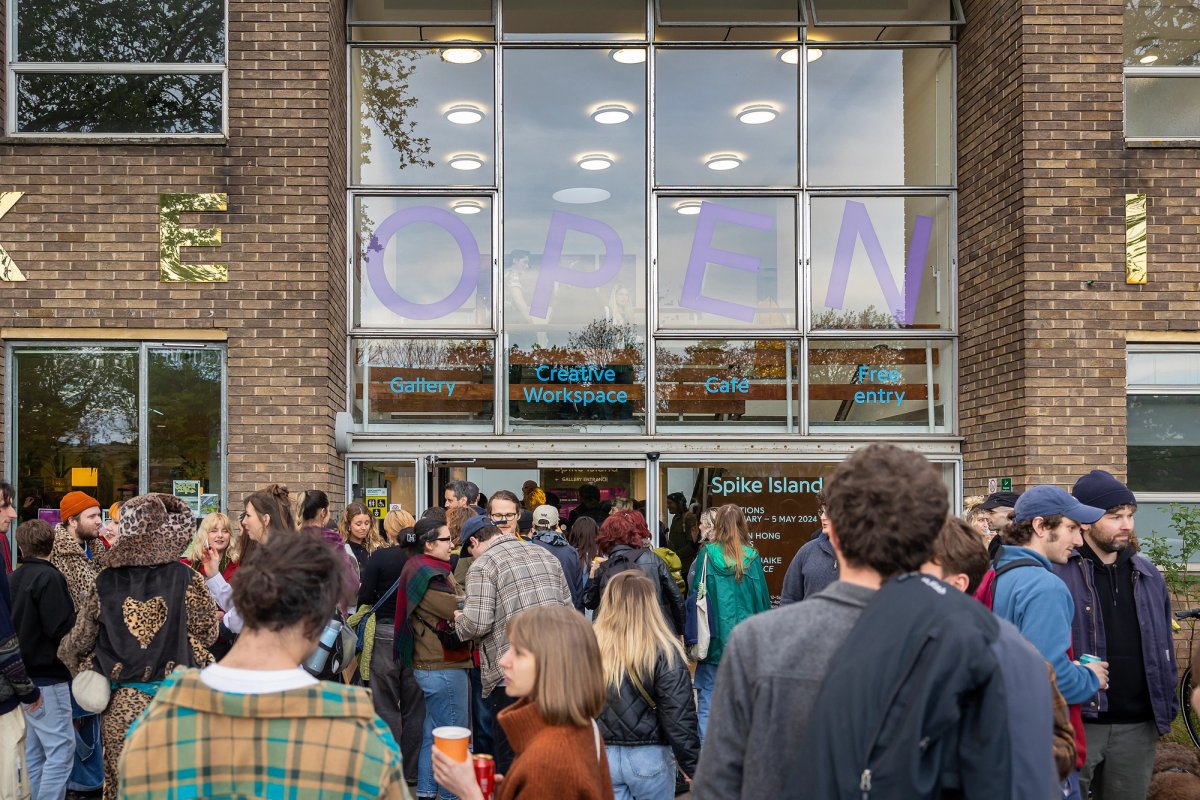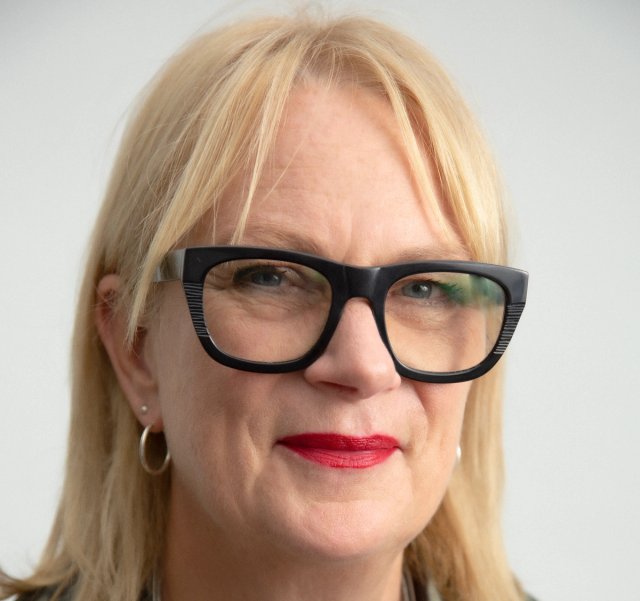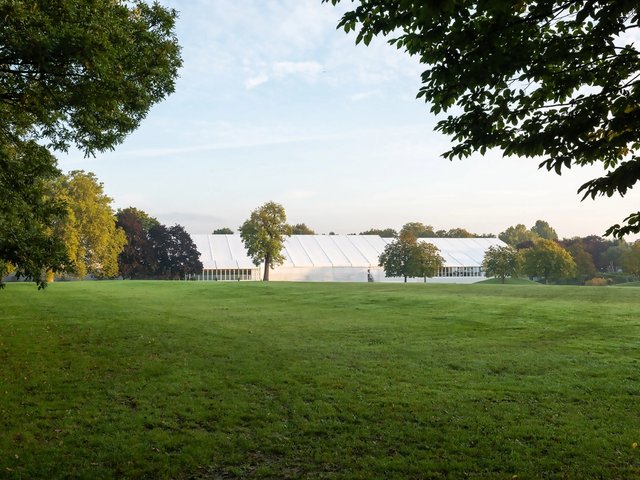Since I began writing this column, green has indeed become the new black. It is now a good look for arts organisations to parade their green credentials. But to what extent are worthy words and performative gestures backed up by real actions?
To identify those who are genuinely pulling their environmental weight, two years ago the Gallery Climate Coalition (GCC), the international charity devoted to facilitating a greener and more sustainable art world (of which I am a founder member) introduced a new Active Membership category. This provides a set of specific and annually renewable criteria which, if fulfilled and submitted by GCC’s now 2000-plus members, marks them out as actively demonstrating (rather than merely declaring) their commitment to taking immediate and effective steps to reduce their carbon impact and to achieve near-zero waste and circular operations.
The checklist of quantifiable actions itemised on GCC’s website varies according to the nature of the applying member who can range from a solitary individual to a major museum, art fair or auction house. For organisations these include making an annual carbon/emissions audit and setting targets accordingly, establishing an in-house “green team” and publishing an environmental responsibility statement that publicly outlines a commitment to action.
All this can seem dauntingly time and resource-hungry, especially for smaller, cash-strapped outfits. But by zeroing-in on Spike Island in Bristol, one of the 120 GCC members that have this year earned the accolade of a jazzy Active Member badge beside their name on GCC’s membership list, it becomes apparent that taking effective action is utterly do-able, and that the benefits can be economic and cultural as well as environmental.
Spike Island is a creative hub whose recent actions have been cited by GCC as an example of excellent environmentally aware practice. Situated in an 80,000 sq. ft historic tea packing factory, it consists of an internationally renowned exhibition space as well as a sprawling community of creatives, including over 70 artist’s studios, creative business tenants and the Spike Print Studio, the largest open-access print studio in the South West. It also contains the University of the West of England’s Fine Art and Art and Writing BA and Fine Art MA programmes.
“Our building is our greatest asset but also our biggest challenge: it was built in the 1950’s and has suffered greatly from neglect and degradation,” declares Spike Island’s director, Nicole Yip. To begin with, it was a concern about energy prices during the Covid-19 pandemic that led the organisation’s management to commission an energy report on the building. This revealed that not only was the roof letting in water, but that it was also spewing out heat.
They discovered that 85% of the organisation’s emissions—not to mention a huge chunk of its running costs—was being expended by the energy required to warm and run the building. “The energy was literally going through the roof,” says Yip. “We very quickly understood that our environmental future was the same thing as our financial future.”
In a pragmatic dovetailing of sustainability with mitigating the risks of fluctuating energy costs —also aided by the fact that the space’s roof is flat—it was decided not only to replace the most problematic areas of leakage, but also to install solar panels. Since the job was completed in March this year, the panels have already saved 6000 kilograms of CO2 emissions—the equivalent of powering three UK homes a year.
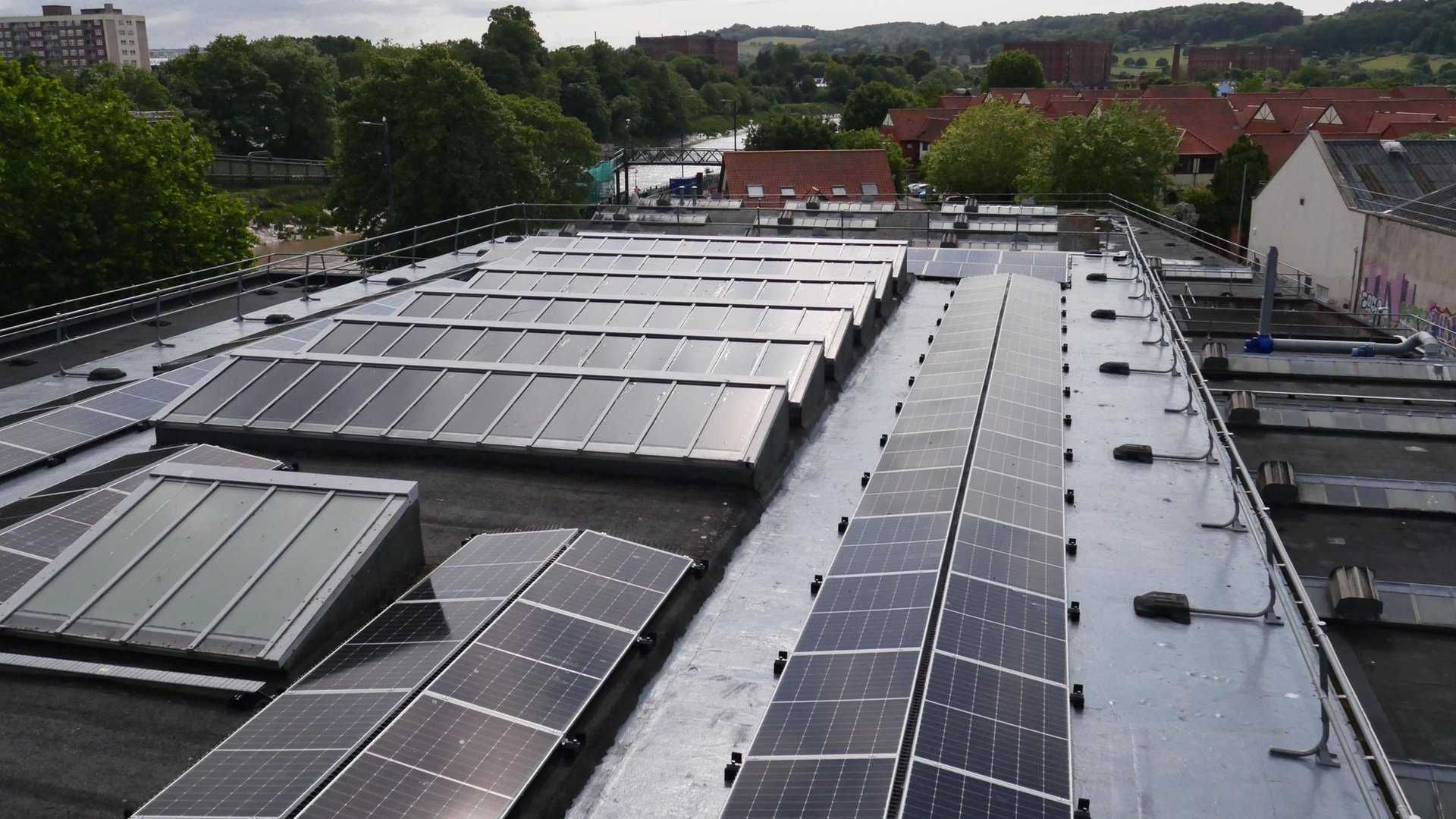
The installation of more panels, heat pump systems, refurbishment and insulation will eventually reduce heat loss by 50%
Now these upgrades have themselves been upgraded to be the first phase of an extensive building retrofit, or what Yip describes as “the scaffolding for an ambitious and wider capital masterplan”. This far-reaching capital project, to be developed by Max Fordham and 6a Architects, will extend into the next decade. The installation of more panels, heat pump systems, refurbishment and insulation will collectively improve energy efficiency, reduce heat loss by 50% and ultimately transition Spike Island to green energy sources. Eventually the organisation will be in a position to feed surplus renewable energy back into the national grid. Long term it makes financial sense to go green.
It makes sense in the short term, too. Alongside these major infrastructure changes, Spike Island is also embedding sustainability across all its exhibitions and day-to-day operations. On its website, an Environmental Responsibility Statement outlines a range of Action Plan measures, including an emphasis on sustainable exhibitions, giving priority to low impact materials, sea freight for international shipments and energy-conscious installation planning. All these save money as well as reduce carbon.
Last Summer’s archival exhibition of the late sculptor Donald Locke (a rarity for the space, which usually works with living artists) may have required works to be transported from America by air, but their impact was mitigated by the fact that the show now tours—by road—to Ikon Gallery, Birmingham and Camden Arts Centre, with many pieces then remaining with Locke’s gallery in London. Then there is yet more environmental and cost benefit in the re-use of the show’s specially constructed plinths and vitrines by touring venues, which will then be repurposed at Spike Island.
“What’s really good about the ecosystem at Spike is that we have a huge community of artists at our heart, so nothing gets wasted, any materials left over from install get used up straight away, ” explains Yip, citing the space’s recent Danielle Dean show, which required an ambitious series of custom-built spaces and screening rooms, as another example of their material circularity. “We only agreed to such an ambitious installation because we planned to use all the wood from the construction when the show came down to construct furniture for a new co-working space on the west side of the building.”
Spike’s current show of Dan Lie, which converts its galleries into a space to slow down, rest and reflect, has all been constructed on site with natural materials that will be repurposed or returned to the earth after the exhibition. These include second hand chairs wrapped in cotton that has been dyed in tea or coffee, large locally sourced stones that keep watch over mattresses filled with hay and lavender and a garland of popcorn that extends throughout the gallery.
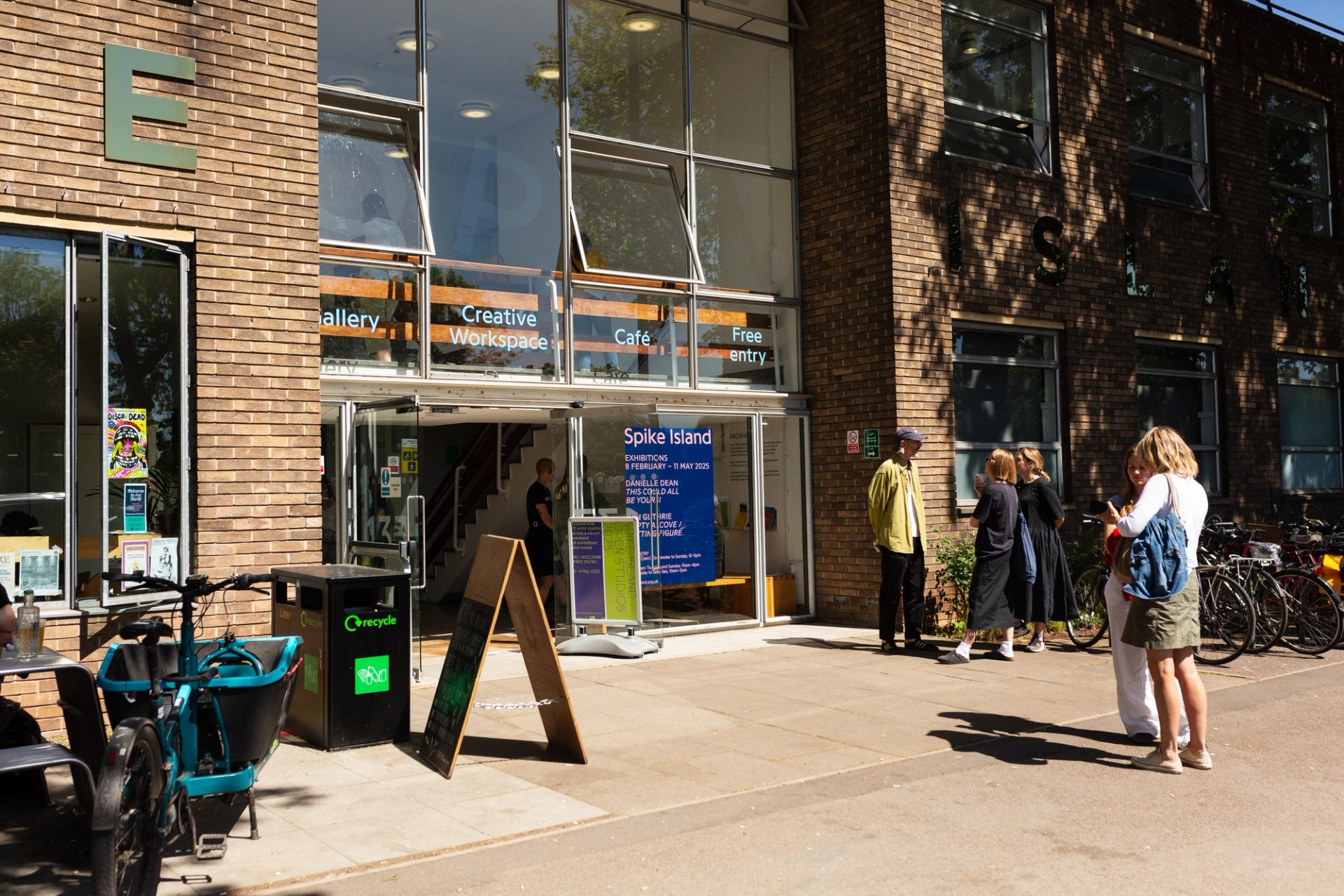
A cafe serving mostly vegetarian and vegan food chimes with the ethos of Spike
Lisa Whiting
Creating a more environmentally-aware culture at Spike has also involved expanding its existing Green Team over recent months to include volunteers from across its wider community—from studio artists, to commercial tenants, staff members and café and building workers. This group has now been rechristened the Green Working Futures Group and is answerable directly to an environmental board subcommittee chaired by one of Spike’s governing board members, Bill Gething, who is an architect and sustainability consultant. The Working Futures group has also started a community garden initiative to make Spike more welcoming to its surrounding neighbours. This in turn chimes with the ethos of Spike’s café, which primarily serves vegetarian and vegan food and is run by a company plugged into local suppliers and food equity initiatives across Bristol.
“We are in consultancy with local residents as well as our internal community to maximise the potential of this place and to secure its future in every way, with sustainability always at its heart,” says Yip. Such a combination of ambition and pragmatism is to be applauded and, hopefully, emulated by more organisations, who need to realise that it makes sense in so many ways to follow Spike Island’s example.


